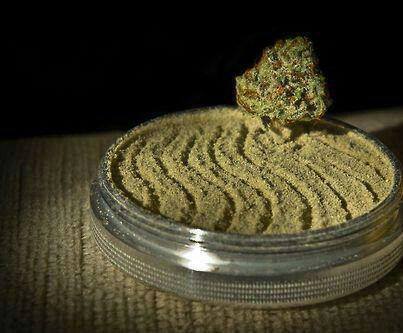
I find everyone uses time for long distances. I know it’s a 13 hour drive to Edmonton but damned if I know how many kilometres it is.

This is what I came here to say. Even short distances.
Basically, any time you’re describing a trip to a destination, it’s in time, based on the mode of travel. Hell, I even describe our family hikes in time it takes our littles to walk it, then estimate how long it would take an adult.
My kids school is 3 minutes away or an 8 minute adult-pace bike ride. Fucked if I know how many km that is.

As a German I have to ask… why? It’s just sad at that point

Basically everything mandated by the government is Metric, so any official labeling (like on roads or foods) and it’s what we are taught in school. But we are in a transitionary phase in terms of whats passed on through family and social interactions. And that period is extended by trade with the US leading to lots of things still having both imperial and metric measurements, or in the case of weather, I grew up on the border listening to Detroit news.

A big reason is, at least for me, I’m one generation removed from someone who lived when Canada was on Imperial. It’ll take a few generations to get rid of it. You can even see it in the replies here, as people who are certainly younger than me are talking about how they’re using metric exclusively for things that I still swap between.
That’s the ONLY reason. I’m quite fond of metric.

It’s not hard for us it’s just what we’re used to.

Inertia and things that are really, really inconvenient otherwise. Here in Saskatchewan, the “grid” roads serving rural Saskatchewan are actually laid out in a 1 mile by 1 mile grid, enclosing 1 section of land (640 acres). Even equipment without odometers can follow directions like “4 miles north and 3 miles west” by simply counting intersections.
By distance, Saskatchewan has approximately 1/3 of all the roads in Canada despite having only about 1/35 the population. Miles are not going anywhere, even if everyone gives total distance travelled and highway distances in kilometres (or approximate travel times).

Yeah, basically. I think it kind of depends on your age though. I was almost 100% metric with the exception of baking until my teens or so (we never had a pool).
A lot of it comes from getting stuff from the US. Most of the cookbooks you find here come from the US so they use US measurement. Doing construction? The lumber’s cut to sell to the US market so you may as well use US measurement when you work with it. Steel lengths are usually available in metric so commercial construction is metric too. I’ve done a fair amount of construction and land surveying so I can do most length conversions like that in my head.
Temperature, though, I’m hopeless with Fahrenheit. Some older folk will still prefer °F to °C all the time but to me it’s just numbers. Most of my life is spent between -30°C and +30°C so it works out very conveniently as a nice symmetrical gauge between “cold winter day” and “hot summer day.”
The rest, well, it’s mostly just the unitary form of peer pressure. You just sort of pick it up. The really wild thing is that I might say something like “oh yeah, my cat weighs 5 lbs, so she’s like half the weight of one of those 5-kilo bags of flour” without irony.

We prefer metric mostly, but so much of our stuff comes from or is sold to the states, so we don’t have much choice but to use both systems.
Anoying af.

I’m pissed we don’t use ISO 216 (A4, A5, B-series, etc.) paper. Almost changed in 1974 but lost our nerve.

Relevant video on metric paper
https://www.youtube.com/watch?v=pUF5esTscZI
content warning: existential crisis

That was exactly the video I thought it was going to be! Classic.

Oh, that would be great!

Objection! “Work” being imperial implies science isn’t work. I’d feel better if it said “construction” or “industry”.

A lot of these are more to do with age or products imported from the US than anything. For example with the temperature one, I would never give the temperature of anything in f, but my parents’ hot tub only displays temperature in f. Also my parents follow a flowchart like this much more than I do because they grew up with a more mixed system. Like they will sometimes give distance in miles whereas I would only ever in km. However there are some of these that even I do. Like I would only ever give my height and weight on feet, inches, and pounds.

Cooking flip flops the most… Usually baking is Imperial ( ferenheit/cups/teaspoon/tablespoon/ounce (weight), fl oz (volume), etc)… But in a single recipe, I’ve turned on the oven to 350F, and mixed a teaspoon of one ingredient into 300 mL of another, then added 300g of a third with an 8oz can of another.
It’s just completely random, even within a single recipe.

Myself, I measure water temp in Celsius (pools, aquariums, lakes, oceans…), but yeah pretty damn accurate.

It’s pretty accurate. Believe it or not, one of our most infamous aviation near-disasters in Canada (the Gimli Glider) happened because someone made a mistake converting fuel quantities between metric & imperial.
My favourite thing is when we get to use awful combinations of both systems, like measuring out 15g of coffee for 12oz of water. Or having 26" bike wheels inflated to 30psi but attached to the bike with a 10mm axle. I especially love kcals and mmHg.

Or even wood that is 2’ by 3’ by 3mm.

I use metric for all distances, and celcius for all temperatures… except my oven, but if i could change that to C, I would.

Many ranges and ovens do have the option to do this hidden in the settings somewhere. It may be worth do a search for how to do it on your model. (Model and serial number are usually on a sticker that is visible when the lower drawer is opened.)

But then you have to convert all the recipes that only list Fahrenheit :(

I’ve never needed to use imperial for long distances for work? Not sure what that’s about.
And don’t get me started on woodworking or the construction industry. Plywood panels are length and width in imperial but thickness in metric or imperial.

I think it’s because when you do a claim it’s still called mileage, even though you log Kms.
Same when buying cars, number if Kms is still referred to as the cars mileage.
I was thinking the same thing!

No, you got that backwards. If it’s a long distance: km. But small distances for work is feet and inches.

I convert recipe measurements to millilitres because it’s way easier to scale a recipe up and down that way.
I use a set of laboratory graduated cylinders in the kitchen for measuring the ingredients.

I learned to convert common ingredients, liquid and dry, from volume to weight and just weigh them. A lot easier to mix things that way and don’t need to have a bunch of different measuring utensils.

This chart has been around for a long time and is getting out of date. It should now be called: How Older Canadians Measure Things. Younger Canadians are getting a lot more metric.
For example none of the younger people at my office know their weight in imperial. The most they knew were some baby weights they had to convert to imperial for their parents.

Really? I find that surprising. I don’t think I’ve ever heard anyone talk about their weight in kilos, aside from in medical contexts. I’m 37, but I work with teenagers; weight doesn’t come up often, but I’ll pay closer attention.

Forgot about deli meet for the weight. It’s always “I want 300 grams of sliced black forest ham”, and not whatever that is in imperial. Do they use ounces for that?

I’ve started asking for a specific number of slices and thickness. 16 slices of shaved blackforest ham gives me 4 sandwiches worth. Oh baby.

This is the way. One customer ever did this in my deli career and it was the easiest transaction.

